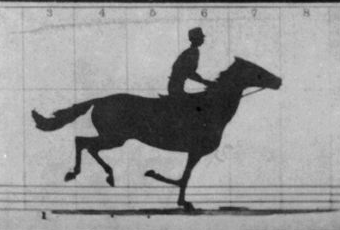Film History
Film history is a vast topic to cover and hard to clearly find the start point. This is because, film wasn’t invented by a single person. In the 1880s, film was being developed internationally by lots of different inventors using various motion picture cameras. However, with the help of dates and years, we can try to lay out the timeline of the film history.
Before learning about film history, let’s understand what a film is. A film can also be known as a motion picture. It is a series of still images that are projected on a screen at a proper speed to create the illusion of moving images. At the beginning of the film era, they used the traditional 16 frames per second for silent films and 24 frames per second for sound films. FPS, which is the abbreviation for Frames Per Second is the frequency at which the images appear on the screen. So, 16 FPS is 16 pictures in a second.
1878 – Sallie Gardner at a Gallop, made by Eadweard Muybridge
In the 1800s we had photography, projection and motion technology. So, Cameras for photography; Magic Lantern for projection and
Phenakistiscope for motion. In 1878, Eadweard Muybridge combined all these together and created a revolutionary moment. He aligned 24 cameras next to each other and linked it to trip wires, which took pictures of a horse galloping. Then, using his invention, the Zoopraxiscope, he projected a two seconds of motion picture. This is possibly the first motion picture ever made.
1895 – Public screening of Lumière brothers’ in Paris
On the 28th December 1895 Lumière brothers’ made their first public screening, which is still considered to be a breakthrough in film history. This happened at Salon Indien du Grand Café in Paris and they featured 10 short films. Even though this has been addressed as the, “first to project moving pictures to a paid audience”, this may not even be the first. Max Skladanowsky, a German inventor had done the same in Berlin two months before this happened.
1897 – The first film studios were built
1898 – The first rotating camera for taking panning shots was built
1899 – The first theatre was built in Philadelphia
First ever theatre was built in Philadelphia. The Chestnut Street Theatre in Philadelphia, Pennsylvania was built by entrepreneurs in order to have a venue for paying audiences.
1903 – The Great Train Robbery by Edwin S. Porter.
The Great Train Robbery, written, produced, and directed by Edwin S Porter. It is an American silent short Western film that is 12 minutes long and consists of possibly the best chase scene ever in film history.
1905 – Famous British director Cecil Hepworth makes ‘Rescued by Rover’
1927 – The Jazz Singer, the first feature-length movie incorporating synchronised dialogues
Expectation for this Academic Study
Through this film history module we expect to be exposed in particular to a wide range of trans national cinema and early cinema from all around the world in an effort to understand the origins of an art form which, in relation to its predecessors is extremely diverse and complex. As a medium, film has always been and continues to be heavily influenced through current culture, politics, technology, genre and gender relations. By the end of this module we hope to have a greater knowledge of a wider range of cinema in regards to the afore mentioned tropes.
Film History or Film Histories?
To start with, there is no single or simple history of film. Given the fact that film is at once many things like art, mass media,an industry as well as an influential form of cultural communication, it is not surprising that history of film can be approached from different perspectives.
There are many varieties of film history as well as trends, due to the fact an era brings events and changes to society. Indeed, film history vehicles many histories of the past, and adds to the present which allows a legacy to societies, countries and especially culture in general.
Own Standpoint/Identity to do Film Studies
In order to examine your own standpoint on where film history starts you need to have an idea of what you consider to be film. This depends on your background, beliefs and opinions. For example, if you are more technical in your ideas then perhaps you consider 1893 when Edison first perfected the Kinetoscope, or perhaps you consider the Lumière brothers because they projected the first moving pictures to paying audience. However you look at it you need to be aware of other peoples points of view and be able to examine yours.
Written by: Gokuladasan, Naomi, Sam and Sophia



This is a very detailed response to the topic, one that follows a clear chronological path and shows awareness that cinema did not just appear in one fell swoop.
At times, perhaps you almost risk going into too much detail (if this is possible) and stray a little from the question of what is film history, to instead provide an overview of film history. The difference here is subtle, but nonetheless exists.
That said, the final three talking points show a keen awareness of the nature of history and how it is always a contested narrative. We’re seeing this week for example how historical assumptions about the pre-eminence of Hollywood may not be as clear cut as we might suppose…
Excellent use of images and very encouraging overall.